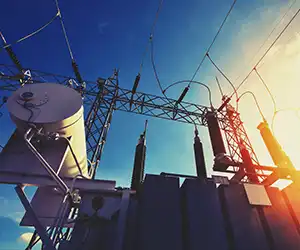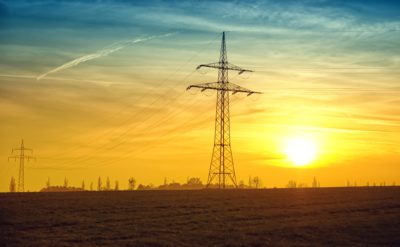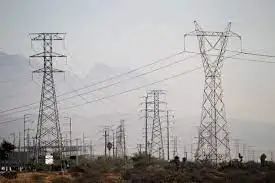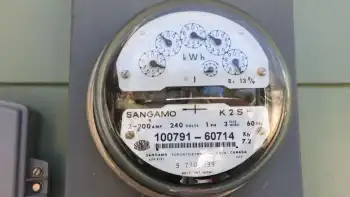Megawatt bio-farming operation in process
By Southwest Farm Press
Substation Relay Protection Training
Our customized live online or in‑person group training can be delivered to your staff at your location.

- Live Online
- 12 hours Instructor-led
- Group Training Available
On June 5 Alders and King, with the support of an investment group, broke ground in Leona, Texas, to build the first cellulose biogas plant in the United States. This history-in-the-making, green business venture is quickly launching Alders and King into megawatt stardom in the farming industry.
Their plan is to harvest sorghum and process it at the biogas plant. The biomethane produced when the sorghum is processed is piped to generators that burn the gas to produce the electricity — one megawatt to be exact. Houston County Utility is buying the electricity and has provided transport lines from the plant to get it into the ERCOT electric grid close to the plant site. Alders’ and King’s plant will provide enough electricity to power approximately 400 homes year round.
Alders and King never intended to revolutionize the energy industry; they just wanted a more efficient way to farm and ranch. A lifelong conservationist, Alders went to the USDA-Natural Resources Conservation Service (NRCS) office in Madisonville, Texas, to toss some ideas around with his local NRCS district conservationist, Floyd Nauls.
Alders was looking for some type of green energy, possibly wind energy, to power his ranching operation. Nauls suggested he visit with Allen Smith, coordinator of the Post Oak Resource Conservation and Development (RC&D), a branch of the NRCS.
After meeting with Alders and King, Smith was encouraged by their entrepreneurial spirit and started working toward the best way to achieve their goal of green, clean energy. Their combined research led them to Germany, where they toured biogas plants powered with feedstocks such as sorghum silage and corn silage.
“These plants are often called a ‘concrete cow,’” Smith explains. “The process mimics a cow’s digestive system. They take in the food source, the bacteria breaks down the cellulose and produces biomethane.”
The plants were efficient, economically viable and seemed like a solution for AldersÂ’ and KingÂ’s energy goals. However, they didnÂ’t want to use existing food crop production as the energy source for their electric plant. They had another idea.
In the 2002 Ag Census, over 21 million acres in Texas were listed as cropland, but were not being harvested. For economic reasons, many farmers had let their fields go fallow and then grazed livestock on them. This fallowed farmland has been deforested, and the rest has built up organic matter and nutrients in the soil, making it an ideal seedbed to plant a dryland crop such as hybrid forage sorghum.
“We chose this variety of hybrid sorghum because it will grow well in a wider variety of soils in a wider variety of climates than other crops,” Smith says. “It also uses much less water with less input cost.”
The group worked with MMR genetics, of Vega, Texas, to find a hybrid forage sorghum plant that will increase tonnage production and produce the most gas.
“In this case, we want our cow to bloat,” jokes Smith. “The more gas we can produce, the more efficiency we get.”
Unlike food crops grown for energy production, the hybrid forage sorghum is a type of grass, so no valuable food sources are used to generate the electricity.
Currently, a farmerÂ’s co-op has committed 2,400 acres to sorghum production for this plant. The farmers are leasing the plant for now, with the option to buy it in the future.
This one megawatt plant will consume 2 tons of silage per hour. Running 24 hours a day, seven days a week, the plant will require 17,520 tons of sorghum per year.
On average, each acre of sorghum will produce 12 tons. The extra acres in production will provide for crop rotation and two years of feedstock stored at all times. The silage will be stored in silos at the plant site where they will steadily feed the “concrete cow” in the non-stop production process.
Smith explains that many feedstocks could be used in this process, and like any other technology, 10 years down the road they might run across something that works better. But for now, the hybrid forage sorghum fits the bill.
“This is a landmark project for the United States and the ag industry,” states NRCS Texas State Conservationist Don Gohmert. “This has the potential to revitalize agriculture as millions of acres that could no longer produce profitable commodity crops, now have a new opportunity for income.”
“And the entire process is based on very sound soil, water and crop production practices,” he adds.
Smith says that because the organic matter is there, strip tillage methods work well for farmers to plant the sorghum in the fallowed land. It maintains organic matter, saves them time and money, and helps conserve soil moisture.
The greenhouse gasses emitted in the process will be offset by their capture and all of the byproducts produced in the process will go back into the cycle or utilized offsite. The CO2 that results in burning the biomethane will be captured, and, along with the introduced nutrients, including poultry litter, will be used to grow algae, which will produce biodiesel. The biodiesel will then go back to the farmers raising the crops.
The digestion production process uses no water, but because on average, silage is 67 percent moisture, water is a byproduct. This water, with valuable minerals and nutrients left in the digestate, is applied back to the land. Storm runoff water is also captured and utilized for plant sanitation and fire prevention. There are opportunities to capture other byproducts, such as heat, and use it to heat water for hospitals, prisons and other facilities.
Alders still used his original idea of wind energy in this project. They placed two 150 kilowatt windmills at the plant to improve the plantÂ’s efficiency and help maintain electric production.
The original plan was to establish one plant, then expand the operation to include five plants in the area. However, when investors saw the impact and potential for the operation, that number grew quickly to 50 plants in central Texas. Based on the expected revenue from this first plant, an economic analysis using the Regional Industry Multiplier System, predicts an additional 137 jobs and 14 businesses will be created in the economic region from this project.
“This is one of those projects our RC&D council is always proud to work on,” Smith says. “It represents everything we do. It is a balanced system that involves land management, conservation practices, water savings, and it has a huge economic and community development role.”
Smith points out that with every single generation, America is losing more and more farmers. “This project could provide a new future for farming and energy in America,” he says. “This is a crop that will keep the next generation of farmers on the farm.”
Thanks to Alders’ and King’s vision and perseverance, “Going Green” has the potential to take on a whole new meaning in households across America as farmers grow our electricity. And when they apply conservation practices from the NRCS, it doesn’t get much greener.















